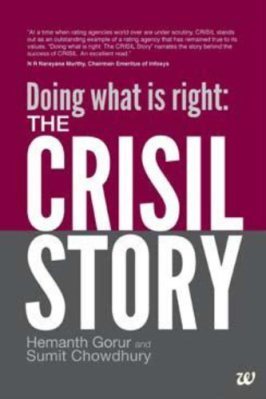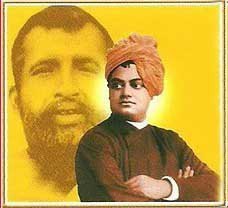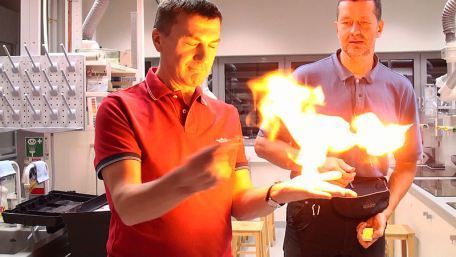Raj Shankar's Blog, page 50
May 21, 2013
Vedantic Wednesday: The Five Sheaths Around The SELF
Why is understanding and experiencing the SELF so difficult, while we can read and listen on it as much as we want to.This is  because, the unchanging SELF is enveloped by not one but five sheaths. These five sheaths are constantly influencing our perceptions and hence experience. To reach to the SELF that resides as the core of our being, we need to penetrate these five sheaths. So the first step is to understand what are these five sheaths. Vedanta describes them as below:
because, the unchanging SELF is enveloped by not one but five sheaths. These five sheaths are constantly influencing our perceptions and hence experience. To reach to the SELF that resides as the core of our being, we need to penetrate these five sheaths. So the first step is to understand what are these five sheaths. Vedanta describes them as below:
1. Annamaya-kosa: The Food Sheath, which implies the physical body. That is maintained by food and returns as food. Its attributes are the height, weight, health, sickness, color etc
2. Pranamaya-kosa: Vital-air Sheath. Prana which represents the vital force that holds the mind and body together coupled with five organs of action forms the vital-air sheath. The attributes include attributes of prana (hunger, thirst, tiredness etc) and attributes of organs of action like speech.
3. Manomaya-kosa: This refers to the mental sheath, which is formed by the mind along with the five sensory organs. The attributes of this include worry, doubt, emotions, vision, smell etc
4. Vijnanamaya-kosa: This refers to the intellectual sheath, which is a combination of intellect and the five organs of perception. Its attributes include aspects of discrimination, doubt, doership, enjoyership (aspects associated with ego)
5. Anandamaya-kosa: This refers to the bliss sheath, and is composed of various vasanas or tendencies like joy of anticipation, thrill of attainment and happiness of enjoyment. This in Upanishads is referred to as the causal body. This is the sheath that still stands between the world and the atman, when the senses and mind cease to function.
To reaching our SELF it becomes necessary for us to peel away each of the layers one by one, like an onion. And just like peeling of an onion this too is not a pleasant task. It is one that seemingly brings pain and doubts as we work on each of the layers. However the efforts are rewarded manifold when we connect to the essence of our being – our SELF!

May 20, 2013
What do you base your decision on?
A good entrepreneur, owner, CEO, manager becomes great because they take decisions on time, and they take decisions that  work for the overall good.
work for the overall good.
I am not talking about moments in life where you make choices where the outcome was predefined. I am talking about decisive and high impact decisions which can make or break your career and the careers of many behind you. Based on what do you make these decisions?
The wise words of an aged successful entrepreneur rang a bell. During our conversations, when I asked him how he made those important decisions, he thought for a while and remarked “base your decisions on data NOT opinion” if we observe closely very often we make decisions based on the opinions of others. Very often we ask the question ‘What do you think?’ and seldom follow it with ‘Why do you think so?’. It is our hope (another assumption) that they have done their homework of studying their data before making the suggestion.
While I am not questioning the trust that you place on your lieutenants and advisors there are two reasons why I strongly urge my CEO clients to look at the data before we have discussions on the decision points:
1) As you look through the data you will see patterns that no one else can see because every pair of eyes are different
2) It makes you more objective about the situation, for opinions most often are shaded with a tinge of emotions and an amount of past baggage
Therefore the next time when you face a decision point, especially a strategic one, check if you have seen the data before signing the decision off…

May 19, 2013
Do Low Price Deals Make You Happy?
A chance discussion with my dad last week got me thinking. We were taking a stroll and having a conversation. Though it was  early evening, the humidity was still high and we were feeling worn out within minutes. So I suggested we have tender coconut. When the vendor told me it would be 25 Rs/- I nonchalantly paid the price for two and walked up to my dad and offered him. When my dad heard the price I had paid – he was quite livid. “25 Rs/- for a tender coconut? We are not asking for a whole tree” he said characteristically. And I tried to calm him down saying “Appa, it is only 25 Rs/-“.
early evening, the humidity was still high and we were feeling worn out within minutes. So I suggested we have tender coconut. When the vendor told me it would be 25 Rs/- I nonchalantly paid the price for two and walked up to my dad and offered him. When my dad heard the price I had paid – he was quite livid. “25 Rs/- for a tender coconut? We are not asking for a whole tree” he said characteristically. And I tried to calm him down saying “Appa, it is only 25 Rs/-“.
This however got me thinking. Paying 25 rupees for a tender coconut in South India is definitely not low price. But in today’s circumstances 25 Rs is a low ticket price for many of us. It is very important to understand there is a huge difference between the two. And our failure to understand the difference and the connect between the terms value, cost and price often allows us to be irrational consumers
You will understand this when you see yourself:
Pick things off the supermarket shelf which you know internally you may never use only because it has a low price attraction.
Constantly get attracted to goods which you know are of low quality, telling yourself even if it works ½ its promised lifetime, you have a deal for yourself
Reaching out for a bundled sales, knowing the add-on is not of much use to you but you still go ahead only because you can have much more features paying just a little more – features that you will never use.
Pick up larger quantities that create issues in storing, preserving and subsequently using – only because the larger volume comes with a comparatively lower price than a smaller volume which makes it look premium
Pick up in your every week shopping smaller quantities of consumables only because they have low ticket price, which if you had brought a larger volume for the month you could have saved more (just the opposite of the previous)
Low Ticket Price is not necessarily the lowest price at which the goods can be priced.
The pricing strategists play on our irrationality, our notions and perceptions to create packages and pricing that are luring. I am not blaming them. That’s what they are for!
But before you gloat over your next low priced deal, you may want to just stop and think if this is really the best buy for the money you are paying?

May 18, 2013
Interesting Links This Week: 19-May-2013

My top three links of this week:
With more people wanting to intern at startups, here are some tips from someone who has read a lot of CV’s for them: http://bit.ly/12JVyUj
Any number of tips on sales and selling should be welcome. At the least they would reinforce its importance. Here are some more: http://bit.ly/18TamDl
Here’s a video for a change! What’s the best way to get started? No right answers honestly, but here is one successful person’s views. Richard Branson on how he got started and what’s the best way to start: http://bit.ly/12nBQ1Z

May 17, 2013
Books and Me: Doing What Is Right: The CRISIL Story
Book Title: Doing What is right: The CRISIL Story
Authors: Hemanth Gorur and Sumit Chowdhury 
The services component of India’s economy is on the rise. What seemed primarily as IT and IT enabled services, is now truly spreading to a wider and healthy representation. While most of the success stories in services have been from information technology, the CRISIL story stands as an useful example to aspiring and emerging entrepreneurs in the services space. The CRISIL story is also inspiring for people who look to build service businesses with a domestic focus as against the predominant export focused IT examples.
Being in the services business myself, I wished to learn how a pure play services start-up orchaestrated its early years, how it created service offerings, how it marketed and sold its efforts and how it has sustained its success for over a quarter of a century. While I could have wished the book to be longer and more detailed about each of these aspects, I was definitely not disappointed.
The CRISIL story is more of a case for intrapreneurship than entrepreneurship. At the same time it is also an example to highlight why the process of starting and growing an enterprise is almost the same in both cases. The opportunity identification by the founding members of CRISIL their creative thought process of introducing a very new solution to the target market, quickly figuring out the make or break parameter/factor for their economic success as ‘TRUST’ speaks volumes about the importance of having focus, clear goals, well designed products, a good guiding policy and coherent actions.
The aspect of communicating value to the identified target market through fair cost but highly effective methods is worth noting. The business design of distributing these services during the early years by signing up partners is also an useful lesson for scaling services organization. CRISIL Story is also about values and character. It has interesting and powerful metaphors for why sticking to values and principles and living them makes immense business sense. It has not only enabled CRISIL attract great talent but also allow for the creation of systems that enable the growth of talent. One of the biggest take-aways of the CRISIL story is that of a talent enabling ecosystem. Every transition of leadership even at the top of the institution seems to have been smooth and natural. Core teams have worked with each other on various engagements over time. Retention of good talent through non-monetary incentives such as giving freedom, powers of decision making, people friendly policies and a culture of transparency provides interesting thoughts.
The company has also managed to retain the entrepreneurial spirit which is enabling it to identify and adapt itself for the next round of growth . This reaffirms how important culture is not only for the sustenance but also the growth of the enterprise. Every service businesses in India can take a page or two from the CRISIL story to re-look at their own set-up!

May 16, 2013
The Two Twins Of People Management
Earlier last week I had written about lessons on creating Team-A. I had also promised to share some of my notes on people management. So here they are:
There are two fundamental confusions in entrepreneurs and managers that lead to much of the people problems. And these  are what I refer to as the ‘Two Twins of People Management’
are what I refer to as the ‘Two Twins of People Management’
While everyone complains about their juniors not taking as much responsibility as they would have wished, there is tremendous silence when you ask the seniors about authority that they have divested.While responsibility is shared to a large extent (though not taken up), authority rarely gets distributed. It stays in the firm clutches of the manager or the entrepreneur. At least the sharing of responsibility and authority do not proceed in the proportional way. If responsibility and authority do not travel hand in hand, people problems are almost an assured reality.
The other complaint of managers is that people do not take feedback in the right manner. Team members do not seem to have the required amount of maturity to take in the given feedback, which after all is for their improvement. And the managers and entrepreneurs spread their hands in frustration – how can one improve if one is not willing to take feedback? However, the reason for this is often the inability of the manager to separate the person from the issue. When the person and issue are not separated clearly in the articulation by the manager/entrepreneur, what the manager may evaluate, criticize and give feedback on could be the issue, but it is received almost always by the person as something at the individual level. For example when you have to indicate to an employee, him coming late is having an impact on completion of work, instead of focusing on the impact of delay of work – the feedback almost starts off with a sermon on punctuality and discipline. The discussion of issue should lead to correction of a personal trait as a remedy. But discussions on personal trait may not always correct the issue at hand. It is the manager’s responsibility to split the person and issue, and then discuss the issue while handing over the feedback. And when the feedback is being given, it has to be with the intent of seeking a resolution to the problem and not reforming a person. Managers and entrepreneurs not doing this has led to loss of great amount of talent in numerous enterprises.
So the next time you are put in charge of managing people remember to be aware of the two twins that are seemingly inseparable and indistinguishable at play!


May 15, 2013
The rigor of the entrepreneurial experiment
This Tuesday’s write-up on start-up and experiments has initiated some interesting conversations. I have had some ask me if I  meant that everything about a startup should be left to chance? Am I against process around entrepreneurship? Some even indicated some of my earlier writing and my book were contradictory to the view that startups should adopt the attitude of experiments.
meant that everything about a startup should be left to chance? Am I against process around entrepreneurship? Some even indicated some of my earlier writing and my book were contradictory to the view that startups should adopt the attitude of experiments.
When I mentioned start-up to be akin to experiments, it was not meant to be taken as an approval for the teams to just do whatever they feel like leaving the results to chance. Infact, an earlier write-up that may give more insights on the meaning of experiments in an entrepreneurial context http://rajshankar.wordpress.com/2012/12/24/entrepreneurs-are-not-cow-boys/
Experimenting is not adoption of a devil-may-care attitude. Experiments imply taking intelligent risks with the inbuilt aspects of agility and resilience. When you look at the development of science, you will understand immediately the power of experiments. Every invention came about when the new generation scientist took on to explore the unknown, standing on the fundamentals built by experiments and efforts of the previous generation. The rigor of scientific enquiry is in its disciplined approach to the undefined. Ask any researcher or any scientist on the level of attention, level of detailing and level of planning that is involved in a serious experiment.
Experiments have to evolve. So every generation of entrepreneurs conduct experiments, and the next generation standing on the ground prepared by them, takes it forward. The spirit of experimentation coupled with the rigor and the process of conducting experiments is what sustains the thrill of the journey!

Announcement: Talk On Ramakrishna-Vivekananda: A Sacred Relationship
 In today’s world many relationships are getting redefined (not necessarily refined). But one relationship that is still held sacred by many is the relationship that exists between a student and his guru. Being a teacher myself, I am constantly moved by the dynamics of student-teacher relationship. Every interaction with a student, goes into defining me as a better teacher and a better person.
In today’s world many relationships are getting redefined (not necessarily refined). But one relationship that is still held sacred by many is the relationship that exists between a student and his guru. Being a teacher myself, I am constantly moved by the dynamics of student-teacher relationship. Every interaction with a student, goes into defining me as a better teacher and a better person.
The relationship that existed between Ramakrishna Paramahamsa and Swami Vivekanada is one that transcends any humanly perceivable notions of a guru-shishya relationship. The mutual admiration, love and respect serves as an inspiration even for a common man, who stumbles upon just snippets about the equation. I consider it a great honor to be able to share some of my thoughts on this sacred relationship between the Master and the Master Disciple of all times on 19th May 2013. The talk titled “Ramakrishna-Vivekananda: A Sacred Relationship” is being organized by Friends Of Same Wavelength, Annanagar.
If you are in Chennai on 19th May 2013, you may want to drop in for the event. It would be great to have you there
The details of the event is as given below:
Title: “Ramakrishna-Vivekananda: A Sacred Relationship”
Date: 19th May 2013, Sunday
For: Friends of Same Wavelength, Annanagar (FOSWL)
Time: 5:00 pm – 6:00 pm
Venue: Natesan Institute of Cooperative Management, 4th Avenue, Annanagar at 5:00 pm.
Contact: Dr.VS Sarma, President FOSWL, Annanagar 9941328377
Admission: Free


May 14, 2013
Vedantic Wednesday: The Three Influencers
Many people play a role in shaping our personality. The process of shaping us starts from the  time we are born and continues almost till the last day of our lives. Each one’s influence on us and the resultant change varies based on many factors. Mentors, Coaches, heroes etc have their own levels of impact. But there are three people whose influence is fairly permanent. Their influence shape our basic personality . Each of these three people give us an aspect that makes us who we are.
time we are born and continues almost till the last day of our lives. Each one’s influence on us and the resultant change varies based on many factors. Mentors, Coaches, heroes etc have their own levels of impact. But there are three people whose influence is fairly permanent. Their influence shape our basic personality . Each of these three people give us an aspect that makes us who we are.
The first one is our Mother. A mother’s relation to her child is special. This relationship instills purity in us. The importance of purity of thought, action and deed cannot be explained enough especially in today’s world. When we see the atrocities being meted out by one on another, this aspect of purity becomes important. And purity of thought and action is what every child experiences and infers through the love of their mother.
The second person is our Father. While the mother, creates the child and instills in him/her purity of thought, it is the father’s responsibility to instill discipline in the child. Discipline means self restraint or self control. When temptations and attractions arise in the world, the child learns this by instruction from his father and reinforces it by watching the father practice it.
The third is our teacher. Ask anyone in the later part of their years, they are bound to tell you the name of atleast one (if not more) teacher who has had a hand in their current success. While in the olden days, the term teacher referred to a single person providing and enabling the child’s learning across various aspects that are required for life, in today’s circumstances it is often a combination of teachers. Even among the many teachers, the teacher who you remember – longest in your life is the one who taught you or instructed you on life and living. This was beyond the subject that they taught. Instructions for life are always best given by and taken from a teacher.
Whose responsibility is it to ensure the child picks up purity, discipline and instructions so as to live a responsible life? Can we blame the mother for a grown up man who misbehaves? Should we blame the father for the irrational indulgence , addiction? Can we blame the teachers for the un-perfected and selfish social actions of the grown-ups? Or is it the child we blame for not having picked up any of this when it had to?
In today’s fast changing, distraction prone and achievement focused world, if the above three (purity of thought, self-restraint and way of right living) are NOT inculcated in the early years, we could start seeing self destructive behaviors become more rampant , eventually leading to our own extinction. Blame who you want today for what has already been created. But we need to find a way to ensure these are inculcated early if we want to have a meaningful future.
“Mata – Pita – Guru – Daivam” a often quoted phrase! I realised there is a reason for this order. It is only with what the mother, father and the teacher collectively give a child, can it realize and live life the right way. And it is on the foundation of this learning can the child on growing up begin to understand his innate divinity. And it is only with the learning from these three can he even hope to realise SELF – or Daivam!
At some point in time we all would be playing atleast one of these roles in someone’s life. Let us understand our responsibility and do whatever is required to play it to perfection!


May 13, 2013
Start-ups and Experiments
During one of my recent workshops I moderated a small panel discussion in which we had a very senior and experienced entrepreneur in the panel. His parting advise to the group of young entrepreneurs was “Expect everything to go wrong”
Post the panel, I was wondering over what that statement could mean to us and why a senior entrepreneur would share that as his parting words. In a very round about way what he said just meant “Experiment!”
When a group of people come together with some common expectations and assumptions, and venture into the unknown together, they are called entrepreneurs. There is risk inherent in the expectations and by nature assumptions are anyways risks. Hence Startups are basically experiments.
When you start an experiment you don’t have specific expectations in mind. You normally tend to have broad directions and hope to be surprised. As you keep experimenting anything that arises other than what you know becomes a finding. A moment of surprise. Pursuing these findings unearths the hidden. Finding them gives you wow!
If we look at a startup from this angle, the journey of entrepreneurship could become fun and enjoyable. The moment we try and bring in detailing to our expectations, the surprise does not lead to AHA moments. Anything that deviates from the expectation is seen as a risk. Achieving the expected results is seen as the only yardstick of success.
When you perform an experiment you are curious as to what could be the actual result. When you perform an experiment you are agile to the results of your experiments, adapting, changing and modifying your next attempt. When you perform an experiment you are resilient to the instant of failure, only to experiment again. When you perform an experiment, you are energized by the instant of success only to plod further on.
It is this attitude of experimentation that start-ups must have. And only this attitude will allow the start-ups to bloom into the next stage.





